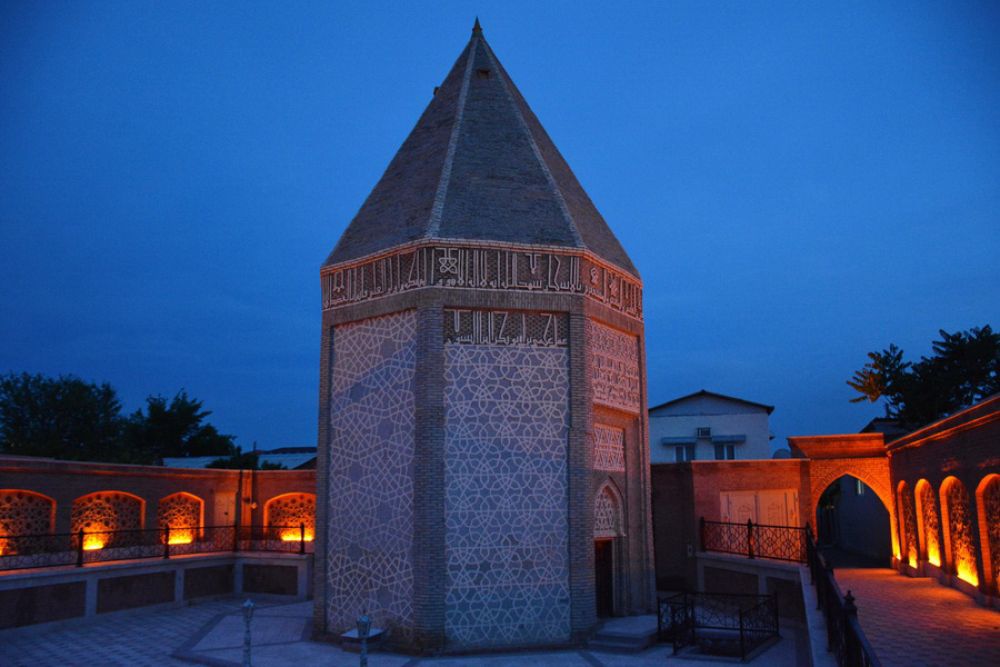

The Yusif ibn Kuseyir Mausoleum is a historical and architectural landmark located in Nakhchivan, an autonomous republic of Azerbaijan. This mausoleum stands as an illustrious example of the architectural tradition of Nakhchivan, which is one of the oldest centers of civilization in the Transcaucasian region.
Constructed in the 12th century, specifically in the year 1162, the mausoleum was built over the grave of Yusif ibn Kuseyir, a revered local Sufi saint. Over the centuries, it has become a destination for pilgrims and tourists alike, attracted by both the spiritual significance and the distinctive architectural features of the mausoleum.
The mausoleum is renowned for its unique cylindrical shape and conical dome, which sets it apart from the predominantly rectangular structures of Islamic architecture during that period. The intricate geometrical patterns and Kufic inscriptions on its exterior panels are also notable, as they are exemplary of the fine craftsmanship and Islamic art prevalent during the era of its construction.
Tourism to the Yusif ibn Kuseyir Mausoleum has been historically significant, with the site acting as a place of interest not only for those on spiritual journeys but also for those seeking to explore the rich cultural heritage of Azerbaijan. Following the Soviet period, where religious practices and tourism were restricted, Azerbaijan's independence in 1991 allowed for a resurgence in both domestic and international tourism.
In recent years, the growth of cultural tourism has seen an increased focus on sites like the Yusif ibn Kuseyir Mausoleum. Efforts to preserve and promote Nakhchivan’s history have culminated in the development of the region as a cultural hot spot. Tourists now visit to admire the amalgamation of the area's ancient history, breathtaking landscapes, and architectural treasures.
The Azerbaijani government and local authorities have recognized the potential of tourism and are actively promoting Nakhchivan as a destination. In line with the latest tourism trends, they aim to provide immersive historical and cultural experiences. Given the importance of digital presence in contemporary tourism, virtual tours, and online informative platforms now complement the physical visitation of historical sites such as the Yusif ibn Kuseyir Mausoleum.
Eco-tourism and sustainable travel are also becoming increasingly popular, as modern travelers are more conscientious about their environmental footprint and the impact of tourism on local communities.
In conclusion, the Yusif ibn Kuseyir Mausoleum remains a significant symbol of Nakhchivan's rich history and a key example of the region’s artistic and architectural legacy. With the interweaving of traditional heritage and contemporary tourism trends, the site continues to draw a diverse group of visitors, eager to experience its timeless allure.